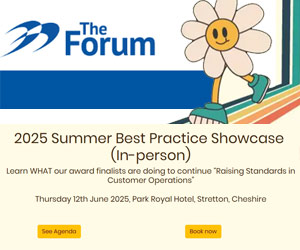In the process of getting the word out that I’m bringing my Master Class to the U.S., I’ve been mugging up (more than usual) on the state of play. The headline brands that pushed the envelope during the first wave of social customer care are justifiably well known. Best Buy, Autodesk, Citi and Dell, to name just a few.
More recently, they have been joined by forward-thinking brands in sectors ready-made for the ‘must help now’ responsiveness that excellent social customer service promises. Think air travel and online retail as examples of sectors closest to the eye of the digital storm now sweeping across global markets.
For a while, it remained a lottery which brands would actually deliver. Social Bakers pegs global averages at around 40% of service requests as still being ignored, with an average wait time of between 5 and 6 hours for those who do receive an answer. This is a standard that makes the much maligned voice channel still look pretty nimble in comparison!
But these are global averages we are talking about. In the sectors I’ve just mentioned they have already moved on, typically inspired by a standout brand who leads the way. For instance, KLM has been an outstanding choice for other airlines to learn from. As best practices seep out, standards around responsiveness and resolution become normalized across the sector.
Even so, every sector has its laggards. For a while they can remain ‘unconsciously incompetent’. But eventually customer feedback takes them up a notch into ‘conscious incompetence’. “Why can’t you be the same as your competitors?” “Listen and learn. Or ignore and lose us.” Thus even laggards get to join the party.
This is how new competencies tend to spread. However, even for the seasoned brand, the nature of social is that you are only as good as your last positive word of mouth, and even the most accomplished can screw up. So the bar is high. Consistency is crucial.
Who Else Is Doing It?
So far, so good. But America is yet to see mainstream adoption. So where are the rest? As customers we are demanding it. The next tranche of brands ought to be arriving. But are they?
ICMI produced a great snapshot earlier this year that tells one version of the story. Their headline is that “while over 68% of contact center professionals think social media is a necessary channel, less than 40% are currently supporting social as a service channel.”
Yet in terms of its significance “over a third of study respondents think they’ll lose customers if they don’t have social as a service channel.”
So recognition is certainly present in the industry. Why the hold-up? The research probed a number of issues.
This is pretty much a statement that a proper strategy is needed. In fact, compare these topics with the 15 competencies used as your strategy framework in the Masterclass and you will see why time spent on integrated planning is both essential and smart. In truth it amounts to a new customer service discipline: similar to, but in no way identical with, traditional service competencies and culture.
Competing Agendas Or Just A Single, Larger Challenge?
Digging deeper in their findings, I spotted another interesting dilemma for service leaders.
“Some practitioners and leaders claim that there is not enough ROI to support investing in this emerging service channel, as it diverts resources that could potentially be allocated elsewhere. (For example, 42% of contact center leaders think mobile support offers more value to customers than social.)”
At face value they have a point. Indeed, when I’m not talking social customer service, I’m on the mobile bandwagon, since it also represents a step change in service strategy. But the point is being missed if anyone thinks they can segment these challenges. The lesson is that this new customer behaviour is being triggered from the collective impact of social, digital, mobile and wireless. Organisations have to respond with that in mind. It needs one vision around how to respond to customers going mobile, becoming social, acting digital. Silos or not.
There is another point here, as well. This viewpoint ignores an obvious truth that social customer care has been chosen by customers rather than offered by organisations. Indeed this reversal of control is the central lesson that social customer service teaches. The first instance being that if you choose to ignore them, customer conversations will still continue. Only you forfeit the ability to influence the outcome, and you offer an open door to competitors by refusing to join in.
So What Does All This Add Up To?
What I’m wondering, of course, is does the research ring true? For instance, in your situation, is the customer demand for social customer service there? If so, is it being ignored and why? Fear based on a lack of know-how? Or an investment phobia around acquiring the right class of technical solution? Maybe the tussle for control between Marketing and Service is still brewing and causing deadlock?
Whatever the individual set of reasons, organisations need to step up. In big-picture terms, social customer care is just table stakes in the greater game of digital transformation. Customers are social, digital, mobile and extremely expectant as a result. That is not going away. In fact, it has only just got going in terms of what else is in store. The future is turning up fast.
Empower Yourself
On a personal note, I’m hitting my sixth decade before the year is out. Each stage in life brings its challenges. In this one, I’ve noticed a new level of internal chatter around being panicked that I can keep up. I guess this must be a tendency in any era, but maybe much more so in today’s fast-transforming world. Becoming obsolete is a problem we all face as individuals and as organisations.
I developed the Masterclass as a smart, safe way to restore confidence and capability in a new topic. For those ‘born into social’ the Masterclass still expands horizons. Whatever your motivation, it works. Everyone takes home a strategy and roadmap.
Read the testimonials on the home page. Imagine the experience of being in the Masterclass. Review the outputs. Then think about it. Is it not time to get serious?
Here’s the detail of the dates, location and price of the Masterclass. Hope to see you there.
Author: Guest Author
Published On: 7th Aug 2014 - Last modified: 16th Feb 2023
Read more about - Archived Content


































